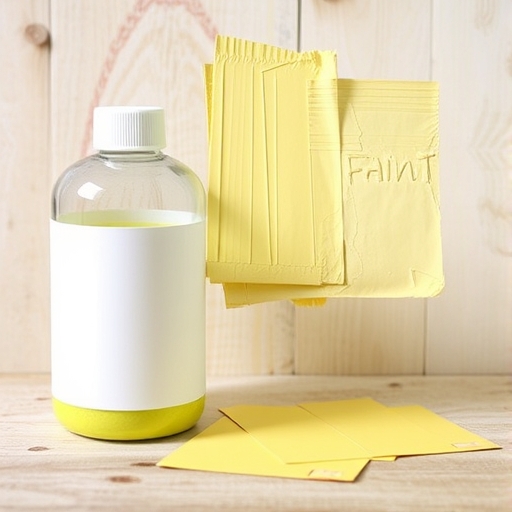What is Paint Thinner?
Paint thinner is a solvent that is used to dilute paint and clean up spills and tools after painting. It plays a vital role in the painting process, helping to achieve the desired consistency of paint and ensuring that tools are easily cleaned. In this article, we will explore what paint thinner is, its types, uses, safety considerations, and how it compares to other solvents.
Understanding Paint Thinner
Definition
Paint thinner is a generic term for solvents that are used to reduce the viscosity of paint, making it easier to apply. These solvents can also be used to clean brushes, rollers, and other painting tools after use.
Composition
The composition of paint thinner can vary widely, but it typically includes:
- Mineral spirits: A petroleum-derived solvent that is commonly used in oil-based paints.
- Turpentine: A natural solvent obtained from pine trees, often used with oil paints.
- Acetone: A strong solvent that is effective for cleaning and thinning.
- Denatured alcohol: Ethanol mixed with a small amount of methanol, used for cleaning and thinning various types of paint.
- Derived from petroleum.
- Often used for thinning oil-based paints and cleaning brushes.
- Has a milder odor compared to turpentine.
- A natural solvent extracted from pine sap.
- Stronger odor and more potent than mineral spirits.
- Preferred by some artists for thinning oil paints.
- A highly volatile solvent.
- Effective for cleaning and thinning certain types of paint.
- Commonly used in nail polish removers.
- Ethanol mixed with additives to make it undrinkable.
- Used for cleaning and thinning shellac and some water-based paints.
- Improved Consistency: Paint thinner is used to achieve the desired consistency for smooth application.
- Ease of Application: Thinned paint flows better, making it easier to apply with brushes or rollers.
- Brushes and Rollers: Paint thinner is effective for cleaning oil-based paints from brushes and rollers.
- Spray Guns: It can also be used to clean spray guns after use.
- Stripping: Paint thinner can be used to strip old paint from surfaces before repainting.
- Spot Cleaning: It can help remove paint spills or splatters from floors and furniture.
- Adhesive Removal: Paint thinner can help remove sticky residues from adhesives.
- Surface Preparation: It is often used to clean surfaces before painting to ensure proper adhesion.
- Inhalation: Fumes from paint thinner can be harmful if inhaled, leading to respiratory issues.
- Skin Contact: Prolonged exposure to paint thinner can cause skin irritation and dermatitis.
- Eye Contact: Can cause irritation and damage to the eyes.
- Use in Well-Ventilated Areas: Always work in a well-ventilated space to avoid inhaling fumes.
- Wear Protective Gear: Use gloves and goggles to protect your skin and eyes.
- Store Properly: Keep paint thinner in a cool, dry place away from heat sources and open flames.
- Inhalation: Move to fresh air immediately if you experience coughing or difficulty breathing.
- Skin Contact: Wash the affected area with soap and water.
- Eye Contact: Rinse eyes with water for at least 15 minutes and seek medical attention.
Common Types of Paint Thinner
1. Mineral Spirits
2. Turpentine
3. Acetone
4. Denatured Alcohol
Uses of Paint Thinner
Paint thinner is incredibly versatile and has several applications:
Thinning Paint
Cleaning Tools
Removing Paint
General Use in DIY Projects
Safety Considerations
While paint thinner is a useful solvent, it is important to handle it with care due to its flammable nature and potential health risks.
Health Risks
Safety Precautions
Emergency Measures
Comparison of Paint Thinner Types
To understand the different types of paint thinner and their applications, here is a simple comparison table:
| Type | Composition | Best Used For | Odor Level | Cleaning Power |
|---|---|---|---|---|
| Mineral Spirits | Petroleum Distillates | Oil-based paints, general cleaning | Moderate | Moderate |
| Turpentine | Natural Resin | Oil paints, artistic applications | Strong | Strong |
| Acetone | Organic Compound | Nail polish, synthetic paints | Very Strong | Very Strong |
| Denatured Alcohol | Ethanol + Additives | Shellac, water-based paints | Moderate | Moderate |
Frequently Asked Questions (FAQ)
1. Can I use paint thinner to clean water-based paints?
No, paint thinner is primarily designed for oil-based paints. For water-based paints, it is better to use water or a specific water-based paint cleaner.
2. Is paint thinner the same as mineral spirits?
While paint thinner can refer to a variety of solvents, mineral spirits is a specific type of paint thinner. It is commonly used for thinning oil-based paints and cleaning tools.
3. How do I dispose of paint thinner?
Check local regulations for hazardous waste disposal. Never pour paint thinner down the drain or throw it in the regular trash. Many communities have designated drop-off locations for hazardous materials.
4. Can I use paint thinner to remove paint from skin?
It is not recommended to use paint thinner on skin due to its potential to cause irritation. Instead, use soap and water or a gentle hand cleaner specifically designed for removing paint.
5. Is it safe to use paint thinner indoors?
It is not recommended to use paint thinner indoors unless you have proper ventilation. Always work in a well-ventilated area or outdoors to minimize exposure to fumes.
Conclusion
Paint thinner is an essential tool in the painting process, providing versatility in thinning paint, cleaning tools, and removing unwanted paint. Understanding the different types of paint thinner, their uses, and safety precautions is crucial for anyone undertaking a painting project. By using paint thinner responsibly and following safety guidelines, you can achieve beautiful results while minimizing health risks. Whether you’re a professional painter or a DIY enthusiast, knowing how to effectively use paint thinner will enhance your painting experience.

